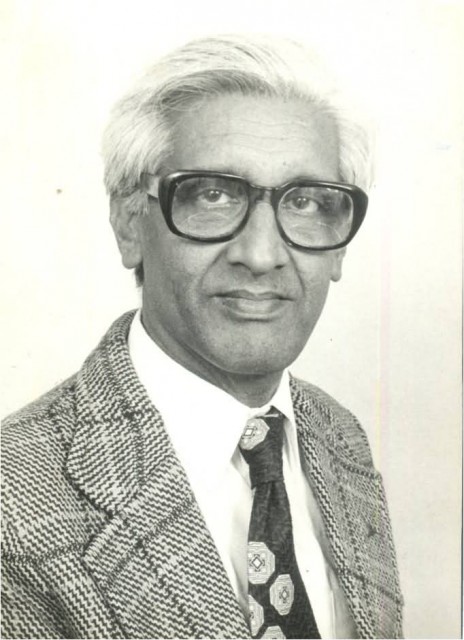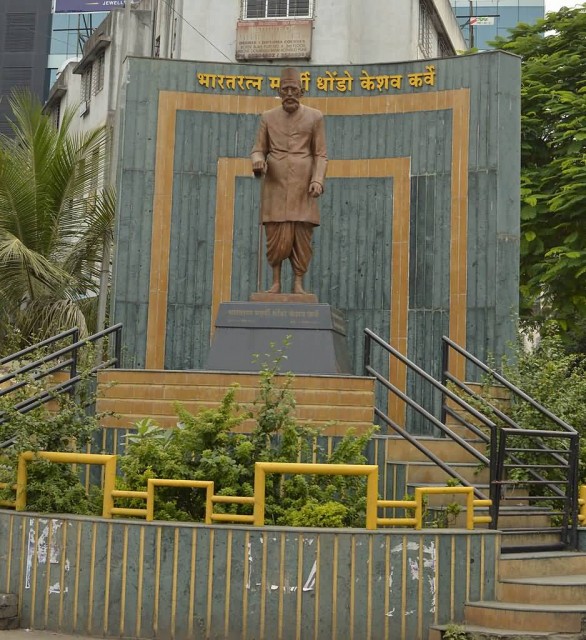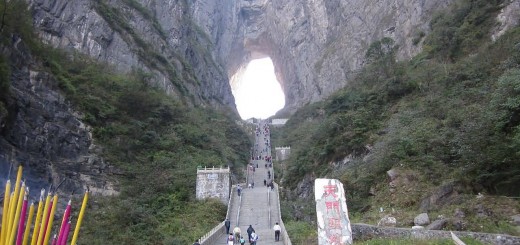The First 10 Laureates Who Were Awarded With The Bharat Ratna

C R Rajagopalachari (Photo Credit: Public Domain)
Shri Chakravarti Rajagopalachari
Chakravarti Rajagopalachari (10 December 1878-25 December 1972), informally called Rajaji or C.R., was an Indian lawyer, independence activist, politician, writer and statesman. Rajagopalachari was the last Governor-General of India. He also served as leader of the Indian National Congress, Premier of the Madras Presidency, Governor of West Bengal, Minister for Home Affairs of the Indian Union and Chief Minister of Madras state. Rajagopalachari founded the Swatantra Party and was one of the first recipients of India’s highest civilian award, the Bharat Ratna.

Rajagopalachari Declares India As A Republic (Photo Credit: Public Domain)
Rajagopalachari, an accomplished writer both in his mother tongue Tamil as well as English, Rajagopalachari was the founder of the Salem Literary Society introduced as the medium of instruction in schools. In 1951, he wrote an abridged retelling of the Mahabharata in English, followed by one of the Ramayana in 1957. Earlier, in 1961, he had translated Kambar’s Tamil Ramayana into English. Apart from his literary works, Rajagopalachari also composed a devotional song Kurai Onrum Illai devoted to Lord Venkateshwara, a song set to music and a regular at Carnatic concerts. During his lifetime, he also acquired the nickname ‘Mongo of Salem’.

Gandhiji And Rajagopalachari (Photo Credit: Public Domain)
Dr. Chandrasekhara Venkata Raman

Sir CV Raman (Photo Credit: Nobel Foundation/ Public Domain)
Sir Chandrasekhara Venkata Raman, (7 November 1888 – 21 November 1970) was an Indian physicist, born in the former Madras Province. Breaking work in the field of light scattering earned him the 1930 Nobel Prize for Physics. Raman was born to a Iyer family in Thiruvanaikaval, Trichinopoly, present-day Tiruchirapalli, Madras Presidency, in British India to Parvati Amma. He was self-educated in the field of science. He was elected a Fellow of the Royal Society early in his career (1924) and knighted in 1929. He discovered that, when light traverses a transparent material, some of the deflected light changes in wavelength. This phenomenon is now called Raman scattering and is the result of the Raman effect In 1954, he was honoured with the highest civilian award in India, the Bharat Ratna.

CV Raman Bust Bitm (Photo Credit: AshLin / CC BY-SA 3.0)
Dr. Sarvepalli Radhakrishnan

Sarvepalli Radhakrishnan (Photo Credit: White House / Public Domain)
Sarvepalli Radhakrishnan (5 September 1888-17 April 1975) was an Indian philosopher and statesman who was the first Vice President of India (1952-1962) and the second President of India from 1962 to 1967. One of India’s most distinguished twentieth-century scholars of comparative religion and philosophy, his academic appointments included the King George V Chair of Mental and Moral Science at the University of Calcutta (1921–1932) and Spalding Professor of Eastern Religion and Ethics at University of Oxford.

In The Oval Office (Photo Credit: Abbie Rowe / Public Domain)
Radhakrishnan was awarded several high awards during his life, including a knighthood in 1931, the Bharat Ratna, the highest civilian award in India, in 1954 and honorary membership of the British Royal Order of Merit in 1963. Radhakrishnan believed that “teachers should be the best minds in the country”. Since 1962, his birthday is celebrated in India as Teacher’s Day on 5 September.

Dr.Sarvepalli Radhakrishnan (Photo Credit: Ask27 / CC BY-SA 4.0)
Dr. Bhagwan Das

Bhagwan Das (Photo Credit: Gayathri.arun9000 / CC BY-SA 3.0)
Bhagwan Das (12 January 1869-18 September 1958) was an Indian Theosophist and public figure. Born in Varanasi, India, in an Agarwal family, he graduated school to became a deputy in the collections bureau. He became allied with the Hindustani Culture Society and was active in opposing rioting as a form of protest. As an advocate for national freedom from the British rule, he was often in danger of reprisals from the Colonial government.

Bhagwan Das With Roselyn Carter (Photo Credit: Gayathri.arun9000 / CC BY-SA 3.0)
He was awarded Bharat Ratna in 1955. With Besant he formed a professional collaboration which led to the founding of the Central Hindu College, which became central Hindu school. Das would later found the Kashi Vidya Peeth, a national university where he served as headmaster. Das was a scholar of Sanskrit, from which he added to the body of Hindi language. He wrote approximately 30 books, many of these in Sanskrit and Hindi.

Bharat Ratna (Photo Credit: Kumar Rajendran / Public Domain)
Shri Jawaharlal Nehru

Jawaharlal Nehru (Photo Credit: Royroydeb / Public Domain)
Jawaharlal Nehru (14 November 1889 – 27 May 1964) was the first Prime Minister of India and a central figure in Indian politics for much of the 20th century. The son of Motilal Nehru, a prominent lawyer and nationalist statesman and Swaroop Rani. After completing his degree in 1910, Nehru went to London and stayed there for two years for law studies at the Inns of Court School of Law (Inner Temple). During this time, he continued to study the scholars of the Fabian Society including Beatrice Webb. Nehru passed his bar examinations in 1912 and was admitted to the English bar.

Nehruconstitution (Photo Credit: NA/ Public Domain)
After returning to India in August 1912, Nehru enrolled himself as an advocate of the Allahabad High Court and tried to settle down as a barrister. Nehru implemented policies based on import substitution industrialisation. As India’s first Prime minister and external affairs minister, Jawaharlal Nehru played a major role in shaping modern India’s government and political culture along with sound foreign policy. In his lifetime, Jawaharlal Nehru enjoyed an iconic status in India and was widely admired across the world for his idealism and statesmanship.

Gandhi And Nehru 1942 (Photo Credit:Dave Davis / Public Domain)
Dr. Mokshagundam Vivesvaraya

Sir M Visweswarayya Bust At Industrial And Technological Museum (Photo Credit: Rahimanuddin Shaik / CC BY-SA 4.0)
Sir Mokshagundam Visvesvaraya, KCIE (15 September 1860 – 14 April 1962) was a notable Indian engineer, scholar, statesman and the Diwan of Mysore from 1912 to 1918. He is a recipient of the Indian Republic’s highest honour, the Bharat Ratna, in 1955. Visvesvaraya has received recognition in various fields, most notably the education sector and the engineering sector. Every year, on his birthday, 15 September is celebrated as Engineer’s Day in India in his memory. He was the chief designer of the flood protection system for the city of Hyderabad in Telangana, as well as the chief engineer responsible for the construction of the Krishna Raja Sagara dam in Mysore. Visvesvaraya was appointed a Companion of the Order of the Indian Empire (CIE) in 1911. In 1915, while he was the Diwan of Mysore, Visvesvaraya was knighted as a Knight Commander of the Order of the Indian Empire (KCIE) by the British for his myriad contributions to the public good. After India attained independence, he was awarded with the nation’s highest honour, the Bharat Ratna, in 1955.

Actual k.c.i.e. Medal (Photo Credit: Prksh1 / Public Domain)
Pt. Govind Ballabh Pant

Pandit Govind Ballabh Pant (Photo Credit: Government of India work / Public Domain)
Govind Ballabh Pant was born on 10 September 1887 in Khoont village on the slopes of Shyahi Devi hill near Almora, in a Karhade family having their roots in Maharashtra. 10 September 1887 – 7 March 1961) was an Indian politician and an veteran independence activist. He was one of the foremost political leaders from Uttarakhand (then in United Provinces) and of the movement to establish Hindi as the official language of India.

Govind Ballabh Pant With Krishnamachari (Photo Credit: Government of India work / Public Domain)
He was made the Chief Minister on 17 July 1937 and was in power till 1939 when all Congress ministries in India resigned. In 1955, he was awarded the Bharat Ratna. As Home minister, his chief achievement was the re-organisation of States along linguistic lines. He was also responsible for the establishment of Hindi as an official language of the central government and a few states.

Statue Of Govind Ballabh Pant At Mall Road Nainital (Photo Credit: Ekabhishek / CC BY-SA 3.0)
Dr. Dhonde Keshav Karve
Dr. Dhondo Keshav Karve (18 April 1858-9 November 1962), popularly known as Maharishi Karve, was a social reformer in India in the field of women’s welfares. The appellation Maharshi, which the Indian public often assigned to Karve, means “a great sage”. The work of Pandita Ramabai inspired Karve to dedicate his life to the cause of female education, and the work of Vishnushastri Chiplunkar and Iswar Chandra Vidyasagar inspired him to work for uplifting the status of widows. Writings of Herbert Spencer had also highly influenced him. Karve wrote two autobiographical works, Ātmawrutta (1928) in Marathi and Looking Back (1936) in English. In 1942 -he was Awarded Doctor of Letters (D. Litt.) by Banaras Hindu University, in 1951-he was Awarded D.Litt. by Pune University, in 1954 h was Awarded D.Litt. by S.N.D.T. University, in he was Awarded Padma Vibhushan by the Government of India, in 1957 he was Awarded LL.D. by University of Mumbai, in 1958 he was Awarded Bharat Ratna, the highest civilian award of India, by the Government of India.

Dr Dhondo keshav karve (Photo Credit: Praveen Thumma / CC BY-SA 3.0)
Dr. Bidhan Chandra Roy

Dr. Bidhan Chandra Roy In 1943 (Photo Credit: Public Domain)
Bidhan Chandra Roy (1 July 1882-1 July 1962) was the second Chief Minister of West Bengal in India. He remained in his post for 14 years as an Indian National Congress candidate, from 1948 until his death in 1962. He was a highly respected physician and a renowned freedom fighter. He is one of the few people who completed both F.R.C.S. and M.R.C.P simultaneously within only two years and three months. In India, the National Doctor’s Day is celebrated on the date of his birth. Immediately after graduation, B.C. Roy joined the Provincial Health Service. He exhibited immense dedication and hard work. He was also a member of the Brahmo Samaj. He was awarded Bharat Ratna on 4 February 1961, India’s highest civilian honour.

B C Roy Technology Hospital (Photo Credit: Ambuj Saxena / CC BY 2.5)
Rajendra Prasad

Dr Rajendra Prasad Narendra modi (Photo Credit: Narendra Modi / CC BY-SA 2.0
Dr. Rajendra Prasad (3 December 1884 – 28 February 1963) was the first President of the Republic of India. An Indian political leader, lawyer by training, Prasad joined the Indian National Congress during the Indian independence movement and became a major leader from the region of Bihar. A supporter of Mahatma Gandhi, Prasad was imprisoned by British authorities during the Salt Satyagraha of 1931 and the Quit India movement of 1942. When India became a Republic in 1950, Prasad was elected its first President by the Constituent Assembly.
Rajendra Prasad served in various educational institutions as a teacher. After completing his M.A in economics, he became a professor of English at the Langat Singh College of Muzaffarpur in (Bihar) and went on to become the principal. In the year 1916, he joined the High Court of Bihar and Odisha. Later in the year 1917, he was appointed as one of the first members of the Senate and Syndicate of the Patna University. He also used to practice law at Bhagalpur, the famous silk-town of Bihar. He was awarded Bharat Ratna in February 1962.

Nehru Bhulabhaidesai Rajendraprasad (Photo Credit: Hindu photo archives / Public Domain)















